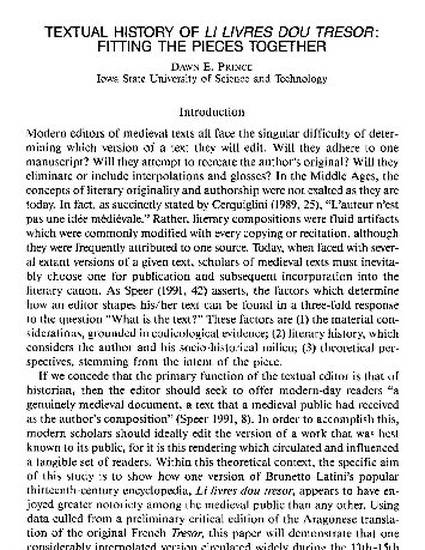
Modern editors of medieval texts all face the singular difficulty of determining which version of a text they will edit. Will they adhere to one manuscript? Will they attempt to recreate the author's original? Will they eliminate or include interpolations and glosses? In the Middle Ages, the concepts of literary originality and authorship were not exalted as they are today. In fact, as succinctly stated by Cerquiglini (1989, 25), "L'auteur n'est pas une idee medievale." Rather, literary compositions were fluid artifacts which were commonly modified with every copying or recitation, although they were frequently attributed to one source. Today, when faced with several extant versions of a given text, scholars of medieval texts must inevitably choose one for publication and subsequent incorporation into the literary canon. As Speer (1991 , 42) asserts, the factors which determine how an editor shapes his/ her text can be found in a three-fold response to the question "What is the text?" These factors are (l) the material considerations, grounded in codicological evidence; (2) literary history, which considers the author and his socio-historical milieu; (3) theoretical perspectives, stemming from the intent of the piece.
Available at: http://works.bepress.com/dawn_bratsch-prince/3/

This article is from Manuscripta 31 (1993): 276, doi:10.1484/J.MSS.3.1445. Posted with permission.